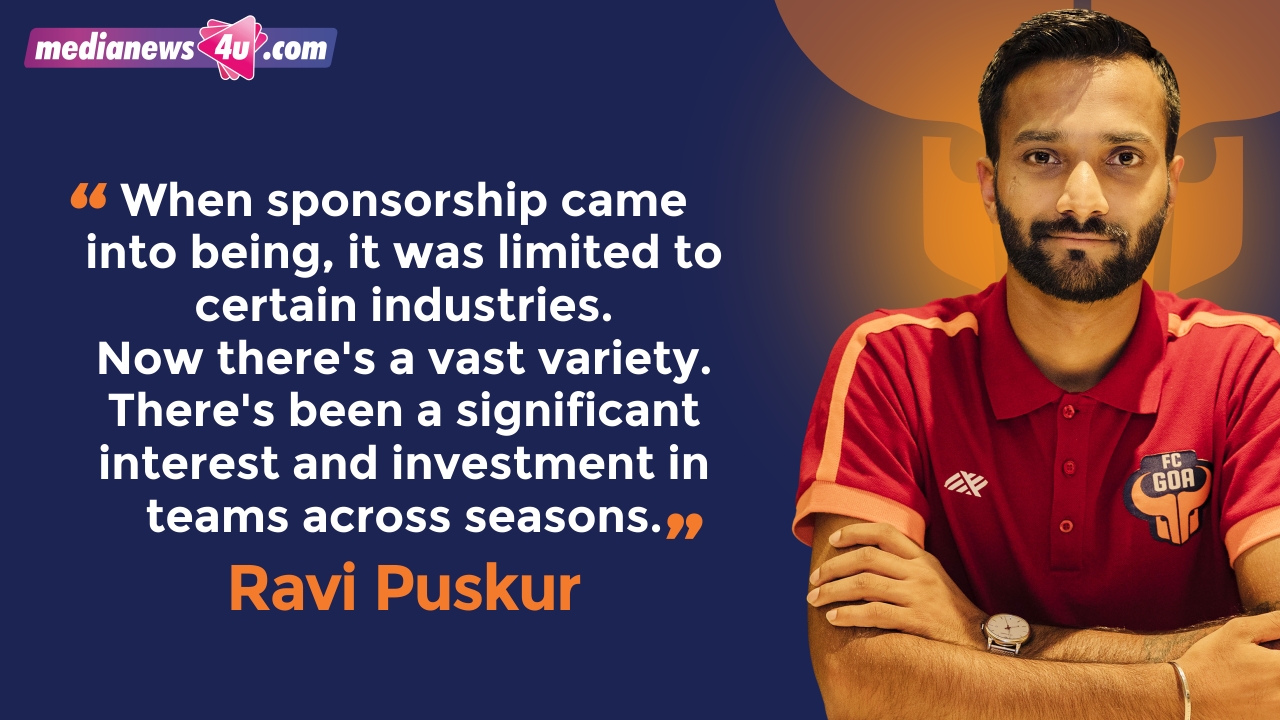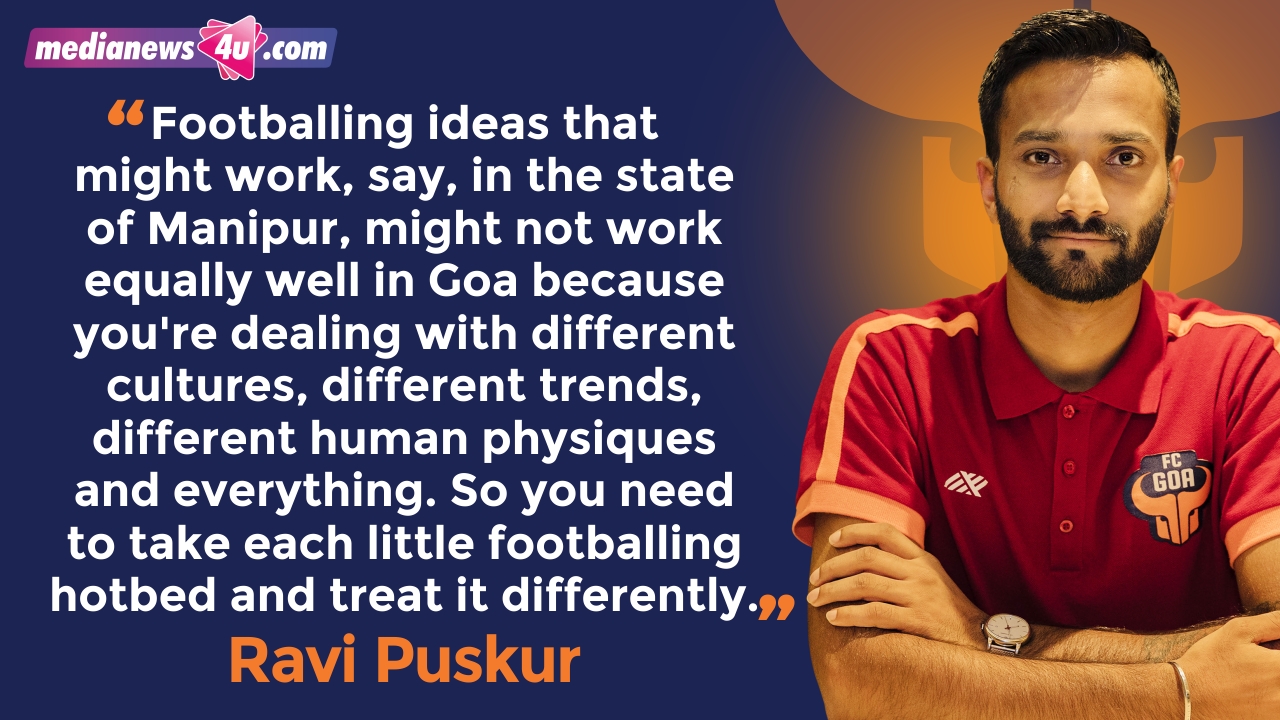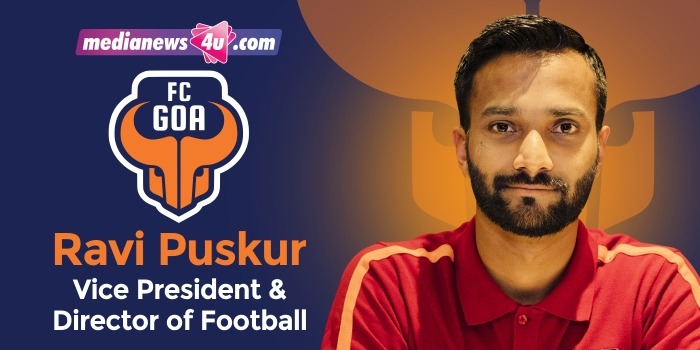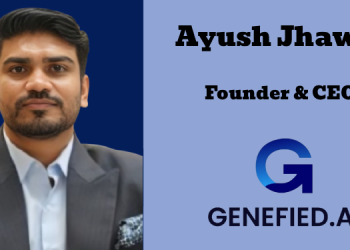Can you tell about the fan base and how it is spread across India?
We’re very fortunate and proud that we have a very strong fan base within Goa itself. While cricket is the number one sport in most other states and cities, in Goa, football is number one. So we’ve always had home support we can count on. But beyond that, since 2016-’17, we’ve had an opportunity to showcase our brand and our efforts on the pitch to the rest of the country.
A certain style of football that we play and that attractiveness, the sort of players that we brought in, the way we put ourselves out there for the rest of the country to feel like they have a connection with us, has allowed us to grow our fan base more and more. In cities where there’s a Goan population, like Mumbai, Bengaluru, there are a significant number of fans who come and watch our games either in person, or their support is always present digitally.
We’ve constantly tried to reach out to other parts of the country. We’ve done footballing activities all the way up in the Northeast, some engagement in Gujarat, a lot of work in Maharashtra and some in Karnataka. We’ve partnered with some smaller projects in Kerala as well. All in an attempt to ensure that our brand of football is present across the country.
How is this base growing – including on social media?
The fan base is growing steadily. Unfortunately, this year, I don’t think it’s grown at the same speed as we would have liked it to or it has in the past, because the team’s performances haven’t been at the same level as they have been historically. We will obviously try to remedy that and hopefully next season we’ll go back to growing again. But as a state which has only two million residents, for us to enjoy one of the largest fan bases in the country is a positive reinforcement that this is possibly something that we could increase year on year.
You made the semi-finals for six of the first seven seasons and the finals in 2015 and 2019. The last two years have not been as good. Does the team’s performance have a bearing on the fan base?
Absolutely. As a football club, our first and most important stakeholders are the fans. If the team is not performing well, then the fans have nothing to look forward to. That’s something that we’ve been very cognisant of right from the beginning – when we had success and when we’ve not had success as well. Football is a sport, it’s competitive.
Everything that we’ve worked towards during the offseason, which is the past couple of months, has been geared towards ensuring that we bring the fans back into the stadiums, onto the TV screens and become everybody’s favorite club again. Because that is what attracts the fans and that is what they want to see.
In our case, we also want it to be an attachment that they have to the club, particularly because of the brand of football.
The viewership of soccer is still lower than that of cricket in India. How is this changing in your view?
We’re a country that’s traditionally been a cricket follower since 1983. That’s when the big boom happened with the World Cup and then all of a sudden, there was a lot of fan following and individual stars have grown too. India has the biggest finances in that sport; football is at a more nascent stage. There are no superstars playing at the world level. And if you look at the global product, what Indian cricket has to offer is the very best in the world. (Indian) Football obviously does not offer that just yet.
If you look at sort of the past seven or eight years, there’s a lot more development since ISL has come into play. The foundations of football clubs have been built across the country. There’s a lot more interest, a lot more kids are taking it up as an activity and then as a professional opportunity. There’s more at the grassroots and academies are popping which will all obviously lead to viewership. People are engaging on a ground level on a daily basis with the sport, and now they have a team that they can attach themselves to. And I don’t just speak for ourselves, I speak for clubs across the country.
If you’re a boy from Kerala, now you have an aspiration that you can look forward to. Similarly, when you have one guy in the neighborhood watching, it’s very likely that there’s few others who latch onto that trend. I think that’s what happened with cricket.
Cricket is way ahead in the country in terms of its globalisation, commercialisation and in its distribution. For football, it’s not going to happen overnight. It’s a process that takes time, but it is taking steady little steps towards increasing its viewership.
As the product improves, as more players emerge who are of actual serious quality, that is when we will see football also boom. Even FIFA considers India a sleeping giant in football. They’ve also identified that an opportunity exists. It’s just about taking those opportunities and taking things step by step and ensuring that we make this sport a lot more popular than it is right now.
The club has a number of sponsors from different industries. Tell us about brand sponsorships and growth therein.
There are brands that sponsor us from all walks of life. Each one has a different perspective. Each one has a different objective. Some come because they want to enter the Goa market and feel it’s a great fit for them. Some believe football engages a lot with your grassroots community, with your children and allows people to enjoy the activity. It’s not something which requires that sort of dedication that cricket requires, where you’re in a stadium for a minimum of three hours.
Is soccer finding more takers today?
I do think that is the case across the country. If you look at Kerala Blasters, FC Goa, ATK Mohun Bagan and East Bengal, these clubs are bringing in a significant amount of interest into the sport. There’s a lot more engagement happening. The AIFF has also realised that there are clubs mobilising themselves and now they’re also trying to assist in that process.
At the ground level, there’s a lot of football fields cropping up across the country. And when I mean football fields, I’m not talking about lush grass fields, I’m also talking about artificial turfs and the like. This is actually a very simple game. It’s a lot more cost effective than cricket for sure, in terms of the equipment required.
So people are engaging with it. Now they also have a local connect that they can latch on to, which was not there previously. Earlier your average football fan possibly supported a club from England or Spain or Italy or watched the World Cup and left it at that. But now there’s something local that they can hang on to and connect with, which obviously increases aspiration and allows that to culminate into something more across generations.
What would be the growth in sponsorship in value terms since the launch of ISL?
I think the interest has significantly increased over the years. In principle, when sponsorship came into being, it was limited to certain industries. Now there’s a vast variety. There’s been a significant interest and investment in teams across seasons. People are investing not just in the footballing league as such, but also in the entire pyramid of football in the state or in the country.

The club just made five new domestic signings including some big names. You recently parted ways with the coach and his team. Tell us more about the changes. Does frequent churn in the line-up impact the team’s following?
It was very important that fans felt they had a connect with the team. That only happens when you have success on the field. That is your primary product and it’s very essential that the club gets its primary product correct.
Fans now see that the club has changed the coach and brought in somebody who’s a proven winner in the league, already been here for the past three years and has developed Indian players. Now we’ve added a strong Indian contingent, reinforcing our commitment to ensure that the team stays on top and as high as possible. Churn in football happens all across the world, but we’ve been largely stable in the way we’ve managed things. We felt we needed to add that extra touch of experience and quality, and that’s what we’ve done.
We have seen T20 stars in cricket emerge from IPL. How has ISL helped in growing domestic players?
What is perhaps a bigger validation is the fact that there are clubs from outside India who are looking at Indian players. That’s a validation that you’re getting not from your domestic market, but from an external market with global players. In terms of the earning potential that the Indian players have, now it is a lot more than it was.
We’re significantly away from achieving global standards where you have one big Indian player crack a top five European league, but at least we’re getting there step by step.

FC Goa had also organised an all-fan league called ‘Road to Goa.’ Can you tell us more about this and other campaigns?
‘Road to Goa’ was essentially a product where we wanted to bring our fans from across the country a little closer. Goa is considered a destination where people come to holiday and party. But we also wanted to be able to reward fans and bring them here and create this atmosphere. The tournament was designed to increase engagement on the ground. We wanted them to engage in the activity itself – to play football, which is our ultimate goal because the more players you have, the greater base. Not everybody has to make it professional, but once you start consuming that activity as a hobby or as a habit, it becomes a lot easier for you to develop that culture. Road to Goa was designed to ensure that we have local engagement during the off season when the ISL is not happening.
The more you have engagement, the better it is. The more activity you have, the greater opportunity there is for players to emerge from this and possibly take it up at a professional level.
How does the grassroots programme work and how many people has it helped?
We have over 1,000 plus kids participating on a weekly basis with parents also coming along. Grassroots essentially has one objective. It’s to promote engagement and activity in the sport. It’s not designed to identify the best potential talents and then take them – that’s not the primary objective. It is to make a child feel comfortable with football and consider it a viable extracurricular activity. Most of the time, it’s about creating competition and giving them the facilities to engage in competition. It’s never about extensive coaching. It’s about them going out on a field, enjoying themselves, engaging in the sport. What comes of it, we will see later.
The idea is to be as wide as possible in the base and engage in as many kids as possible. We start as young as six years old, and take it up to the age of 12 to 13, at which point you go into more specialised coaching and training programmes.
How has the brand been promoted so far? What are the marketing and other media plans?
It’s very essential that the Goan fans feel that they have a connect with the team. So a lot of the work that we do, a lot of the content that we produce, is to engage with that community. Beyond that, we also do a lot of work on our digital platforms. We try and make it as inclusive as possible for everybody involved.
While the normal footballing target audience tends to be a male 18 to 35 (or 40) years, who is your primary audience, we are trying to engage with women and children. We’re trying to make it a sport which allows society to come together. If you see our stadium, there’s a good, even ratio between male and female viewers, and many kids attend the games compared to other cities in the country.
We also do a lot of offline events like team dinners, screenings, friendly matches, awards nights at the end of the season. We try and engage fans so they feel like they’re a part of the club and they have some voice and say in how the club is doing things. Ultimately it’s them that we are servicing. We try to take their voice into account.
FC Goa has a strategic international partnership with German Bundesliga club RB Leipzig. Tell us more about that association. Do you have any other international tie-ups?
RB Leipzig has been one of the pioneers in developing youth programmes, developing their internal products. They’ve been at the cutting edge of using sports science, data, technology advancements to make their football players larger than the sum of their parts. And it’s a club that we felt resonated with what we wanted to achieve here at FC Goa. While there are no shortcuts in the sport, you always try and speed up the process as much as you can and be as foolproof as possible in the process.
RB Leipzig presented us an opportunity because they felt FC Goa had the ambition which they had when they began. Given that there was a lot of alignment in how we thought and engaged, we said we’d do it. The partnership is largely focused on youth development.
We’ve created an IP called the Digital Academy. It’s a modern form of learning where fans can engage with the club without actually being physically present in the city. You can learn from our coaches without having to be physically present on the training ground. We’ll continue to come up with more products, services and offerings as the years progress.
India’s best ranking globally was 94 in the year 1996, now it is at 101. What could be done at the federation / sports ministry level to up the standard of football in India?
India is a country that is so vast that you have to treat it like a continent. Footballing ideas that might work, say, in the state of Manipur, might not work equally well in Goa because you’re dealing with different cultures, different trends, different human physiques and everything. So you need to take each little footballing hotbed and treat it differently and ensure that you’re creating an environment which allows the players in that particular region to grow to the best of their capabilities.

And then they need to find a common point where you connect the dots. So while you can have a state programme in Goa, one in Mizoram, Kerala, Maharashtra, what you need to do is find a way to tie all of that together.
I think national federations, the sports ministry and others can play a larger role, and allow clubs or local state authorities and football associations to take responsibility for developing the game in their particular areas. They’ll know how to do that best. Trying to do everything by themselves is not going to be easy for any particular individual or body. It will require multiple stakeholders at multiple different levels across the footballing pyramid to come together to be able to do something a little better.
Gradually, as you increase competition and playing time, you will end up seeing better footballers coming through. Once you have better footballers coming through, you’ll ultimately see a change in the results.
(First published by The Free Press Journal BrandSutra. Content powered by MediaNews4u.com. Feedback: [email protected])

















